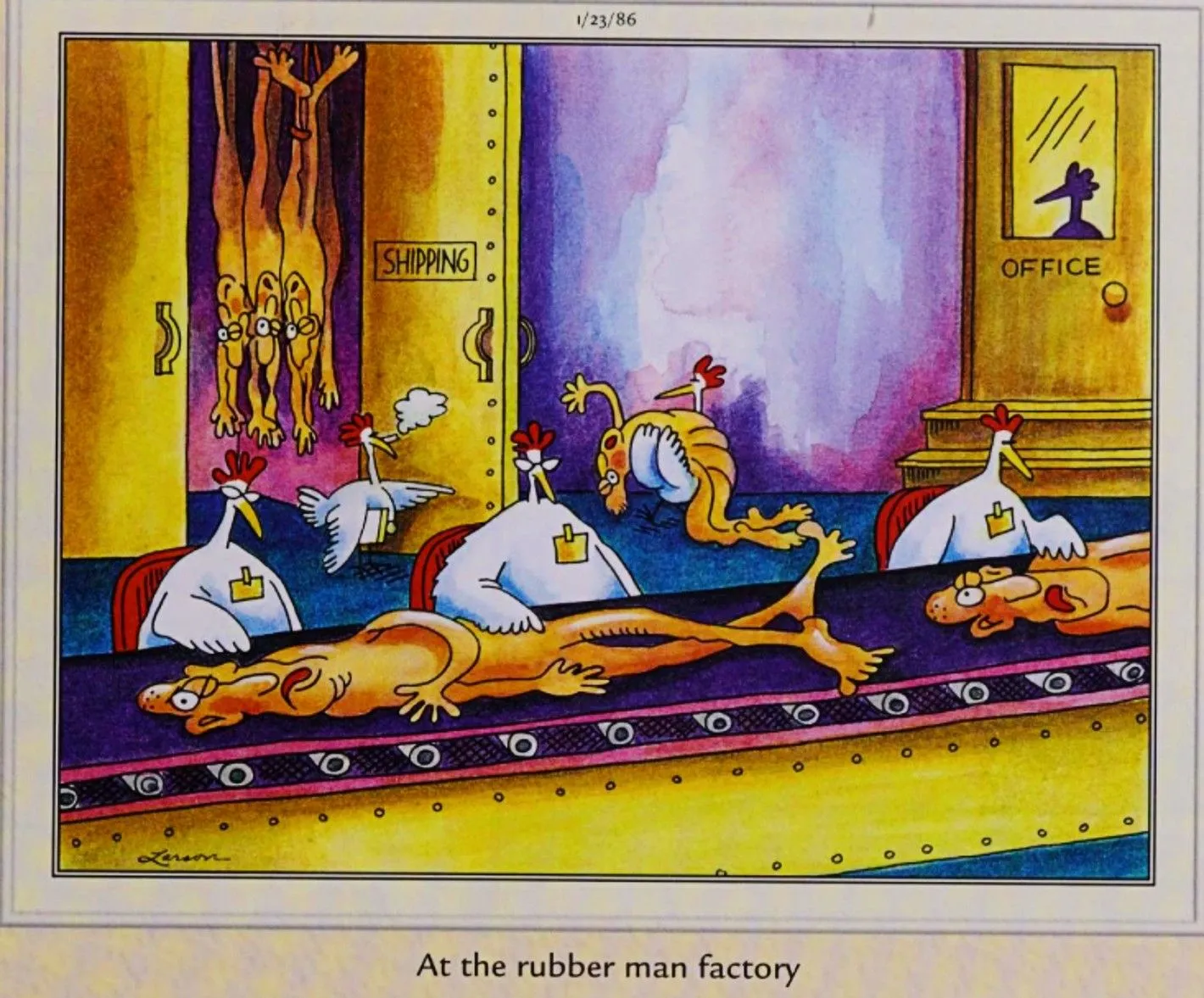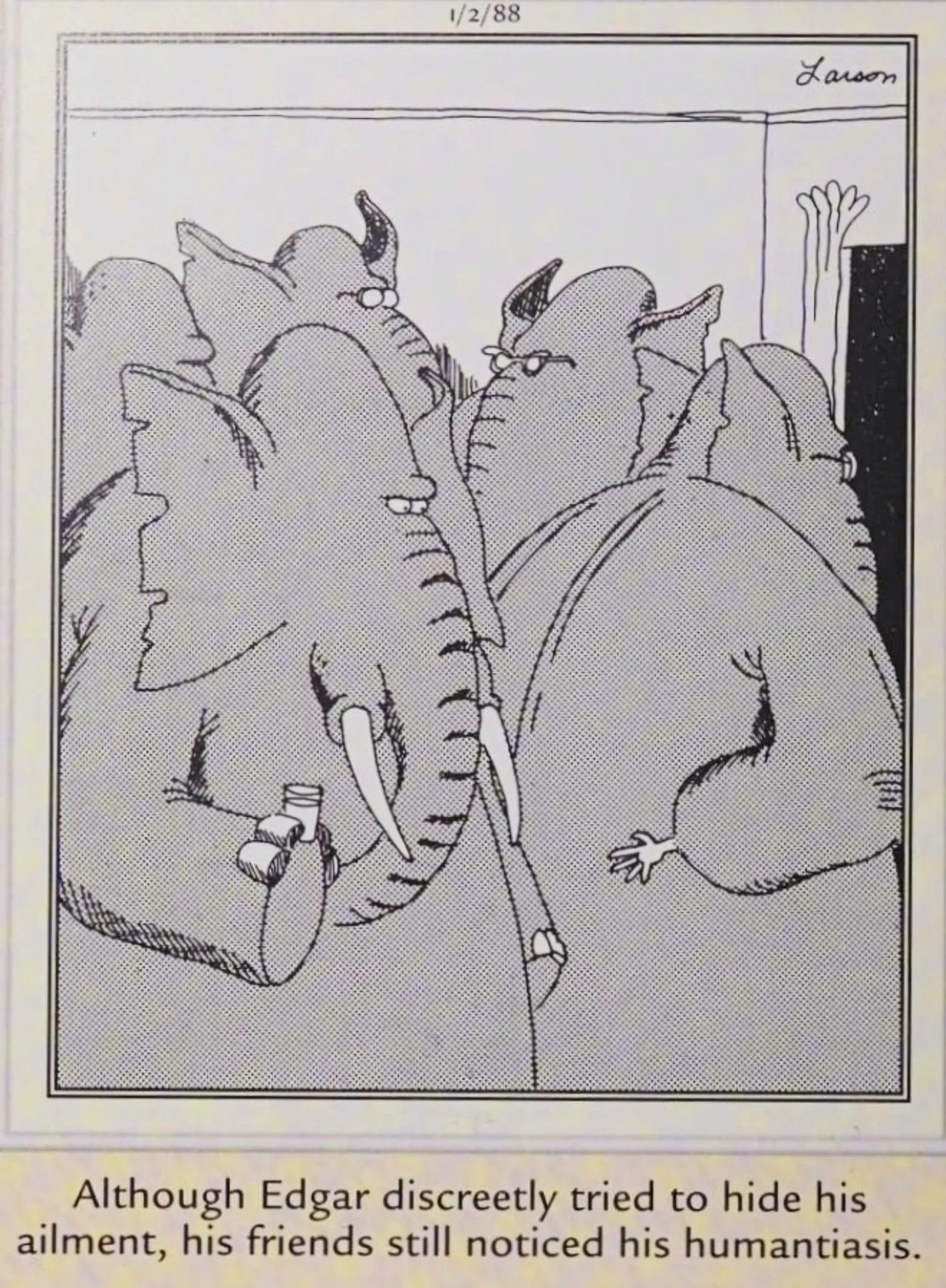
Gary Larson’s humor encompassed the entire spectrum of human experience, skillfully satirizing both our triumphs and failures. Over the years, he approached his critique of human nature from a diverse array of angles.
Utilizing a myriad of characters—from aliens in his iconic comic series The Far Side to microscopic organisms like ants and amoebae—Larson compelled his audience to re-examine the ordinary within unconventional frameworks. This methodology birthed some of his most uproarious cartoons while also delivering poignant social commentary.
10 Evolution: A Sprint, Not a Marathon
First Published: August 25, 1982

In a memorable panel featuring cavepeople, a pair of prehistoric beings sit on a branch, witnessing another couple striding confidently below with fire and spears. The female character, frustrated, exclaims, “Seems like everyone’s evolving except us!” This reflects a common sentiment—feeling left behind as others progress, a timeless experience resonating deeply across generations.
9 Humans and Ants: A Surprising Parallel
First Published: April 12, 1984

In a comic captioned “How social animals work together,” Larson depicts humans collaboratively hauling a massive turkey leg down a street, paralleling the industriousness of ants. Known for personifying ants, Larson cleverly flips the script, showcasing humans mimicking insect behavior, urging readers to reconsider the fundamental similarities across species.
8 The Power of Ignoring the Obvious
First Published: December 24, 1984

This whimsical cartoon features a comic reveal: A man confesses he is actually a Komodo dragon, the largest lizard and a “filthy liar.” This gag resonates because it absurdly mirrors real-life scenarios of deceit, where individuals ignore glaring signs of dishonesty, capturing Larson’s keen insight into human behavior and relationships.
7 “Love What You Do” in a Different Light
First Published: April 15, 1985

Larson frequently utilized warfare as a backdrop for social commentary. In one striking cartoon, a medieval soldier enthusiastically pours boiling pitch on foes while proclaiming, “You know, Bernie… win or lose, I love doing this.” The humor underlines a darker truth: some individuals are inherently drawn to conflict, a timeless facet of human history.
6 Inverting Comedy Props: The Rubber Chicken
First Published: January 23, 1986

One amusing comic showcases chickens laboring at a rubber man factory, flipping the well-known “rubber chicken” gag on its head. This punchline encourages deeper contemplation about the humor in rubber chickens, contrasting their silliness with the innocuousness associated with a rubber duck, adding layers to Larson’s comedic tapestry.
5 Rethinking Nature’s Peacefulness
First Published: August 7, 1987

This thoughtful cartoon features bears in trench coats within a city, seeking asylum from the chaos of nature. Larson effectively subverts the common notion that nature is a tranquil escape, revealing the often idealized view that humans hold of the natural world, cleverly flipping this perception on its head.
4 A Cynical View of the Human Condition
First Published: January 2, 1988

In a clever use of inversion, one Far Side panel features an elephant hiding a human hand behind his back, while his companions notice his “humantiasis.” This cartoon illustrates Larson’s often cynical take on humanity—depicting the human experience as something unfavorable and hinting at the inherent vulnerabilities present in being human.
3 Satire on Multi-Level Marketing
First Published: April 6, 1990

In a candid critique of multi-level marketing, particularly Amway, Larson illustrates amoebas engaging in business practices likened to pyramid schemes. The punchline—“Just keep dividing and selling, dividing and selling,” emphasizes the absurdity of such business models and showcases Larson’s social consciousness, making a statement hidden in humor.
2 Political Commentary: Laughing at Congress
First Published: January 15, 1992

Entitled “In the corridors of Clowngress,” this comic brilliantly combines wordplay with political commentary, portraying a hall filled with clowns instead of politicians. While Larson doesn’t directly label politicians as clowns, he cleverly illustrates the common American sentiment towards their leadership, creating a thoughtful observation on political culture.
1 The Dynamics of Family Legacy
First Published: August 30, 1993

In this poignant panel, Larson reflects on the notion of family legacy in America through the depiction of Barnum and Bailey’s children sneaking out to “join corporate America.” This satirical twist on running away to join the circus sharpens our understanding of individual aspiration versus familial expectation, showing how the pursuit of personal success often diverges from inherited legacies.




Leave a Reply